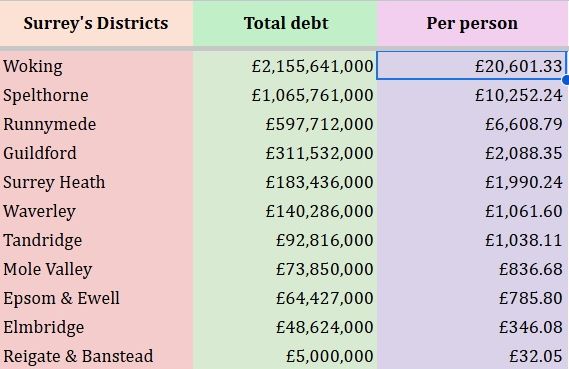Families have been left worried sick and children devastated after Surrey County Council decided to sell their homes “to ensure best value” in the “disposal of public assets”.
Residents say the council is putting profit before people as it seeks to cash in on their homes through its private company—insisting upon selling them as vacant possessions and giving them until July to move out.
They claim the council is refusing to consider offers from the families who have built their lives there and instead told them they must leave so the properties can be placed on the open market.
One family has lived in Norbury Park, Mickleham, since 2003 under a long-term lease when it was owned by Surrey Wildlife Trust, prior to being taken over by the county council’s private company, Halsey Garton Residential Ltd (HGR). In that time, the family invested significantly in repairs and improvements, believing their tenancy was secure. They say they even made an offer to buy the property, but it was rejected, with Surrey insisting the house must be vacated first.
Helen Wood, who lives in one of the Norbury Park homes said she the council-created company took on the properties from the Surrey Wildlife Trust in 2022. Families have been left worried sick and children ‘devastated’ …”
Mrs Wood said: “Our children are devastated at the thought of losing the house, their home. My 12-year-old has asked why this is happening, and we have tried to explain it to him, but even he says it makes no sense—they want to sell and we want to buy. We can’t move on with our lives or plan anything and are just stuck in limbo. It is pretty hellish and worse than that, it just seems really unfair and nonsensical.”
She added: “We saw other neighbours were being evicted and had to force a meeting to find out our own situation. Ridiculously, we can’t buy it. I’m a fit and healthy 54-year-old with two kids but I’ve ended up on blood pressure tablets. I’ve never had an issue and now I’ll be on them for the rest of my life. It’s horrendous. All I’m doing is thinking we’re another day nearer, and another week nearer, another month nearer, to losing our home. We can’t buy in the area. We’ll lose our workshop and my husband will lose his job. I’m just trying not to think about it as it just makes us anxious.”
The families are asking Surrey County Council to allow an independent valuation of the homes and to be given first refusal to purchase and remain in the properties.
Charles Maxlow-Tomlinson, managing director of Halsey Garton Residential Ltd—a company registered at Surrey County Council’s headquarters and specialising in the letting and operating of owned or leased real estate—responded: “Surrey County Council is the freeholder of various properties which are managed by Halsey Garton Residential Ltd under a strategy approved by SCC’s Strategic Investment Board. HGR is a subsidiary of the council and has a long leasehold interest in the properties. HGR was established to help generate commercial returns, providing an alternative revenue stream that supports the Council’s broader financial resilience.
“HGR remains deeply committed to responsible and balanced property management. We have been actively engaging with tenants to listen to their concerns regarding the proposed sale of properties and lease arrangements. We understand how unsettling this situation can be for families and, where appropriate, we have offered new lease terms with more tenant-friendly conditions, extending occupancy until June 2026.
“We fully acknowledge the personal impact this may have on individual tenants. While HGR and SCC are not housing authorities and do not retain residential properties for long-term housing provision, we are committed to treating all tenants with dignity and respect throughout this process. Tenants have been informed of the proposed sales, and we want to clarify that there are no current eviction notices for the properties in Norbury Park. To ensure openness and transparency, when properties are placed on the open market for sale, anybody can make an offer to purchase, and the most proceedable offer will be accepted.”
Councillor Natalie Bramhall, cabinet member for property, infrastructure and waste, said: “Surrey County Council has a statutory duty to ensure best value in the use and disposal of public assets. In fulfilling this responsibility, and to maintain transparency and fairness, the council and its subsidiaries have followed a consistent approach over the past five years: selling its properties on the open market with vacant possession. This ensures that we can secure the best possible return, which is vital for delivering essential public services to the wider community.
Helen and Grant Wood together with their dog (Image Helen Wood)

